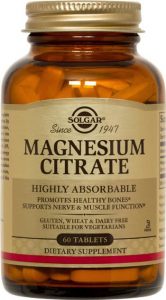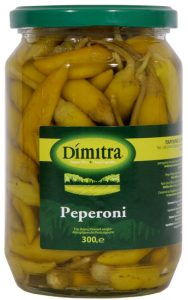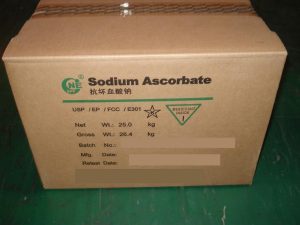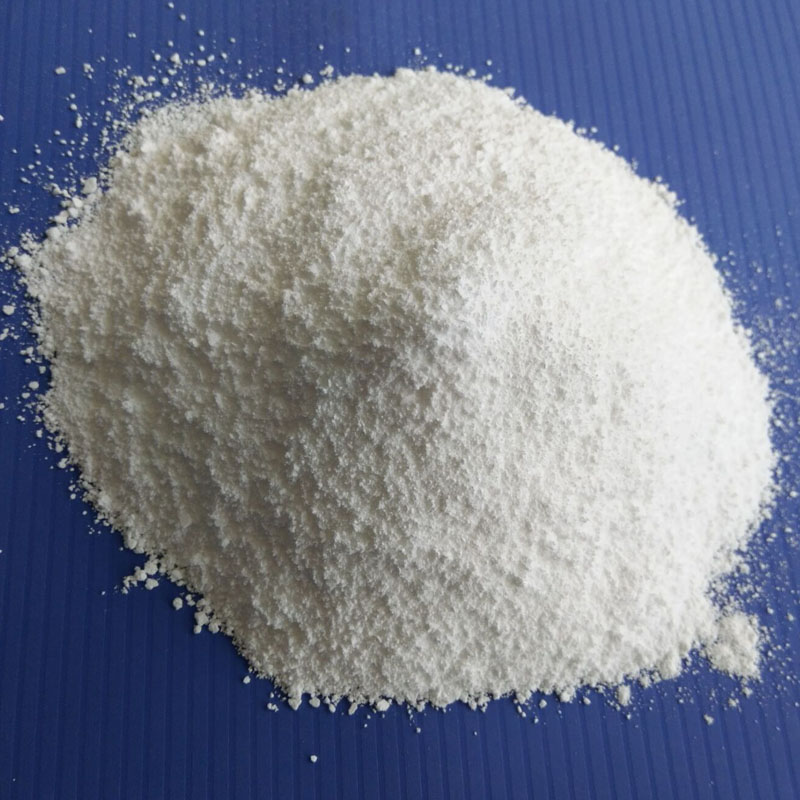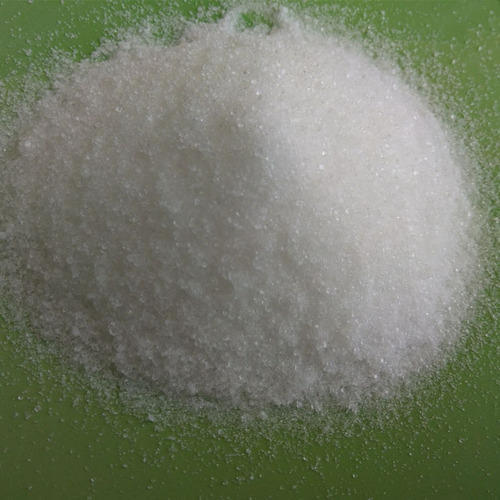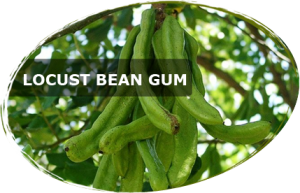Carboxymethyl cellulose (CMC, E466) is a cellulose derivative with carboxymethyl groups. It is often used as its sodium salt, sodium carboxymethyl cellulose. Sodium Carboxymethyl Cellulose (CMC, E466) can be used in Food, Beverage, Pharmaceutical, Health & Personal care products, Agriculture/Animal Feed/Poultry. Sodium Carboxymethyl Cellulose (CMC, E466) is used in food as a viscosity modifier or thickener, and to stabilize emulsions in various products. Sodium Carboxymethyl Cellulose(CMC, E466) is also used in toothpaste, laxatives, diet pills,water-based paints, detergents, textile sizing, and various paper products.
Sodium Carboxymethyl Cellulose(CMC, E466) appears as a white to cream colored powder, and has a viscosity of approximately 1000-10000 mPa.s. It is used as a viscosity modifier and thickener to stabilize emulsions in products like ice cream and dairy products. It is also used to achieve tartrate or cold stability in wine.

Sodium Carboxymethyl Cellulose (CMC, E466) functions in the food industry:
CMC has the functions of thickening, suspending, emulsifying, stabilizing, shaping, filming, bulking, anti-corrosion, retaining freshness, acid-resisting, health protecting, etc. It can replace the application of guar gum, gelatin, agar, sodium alginate, and pectin. It is widely used in modern food industry, such as frozen food, solid drink, fruit juice, jam, lactic acid drinks, condiment, biscuit, instant noodles, bakery products, meat products, etc.
1. Thickening: CMC E466 can produce high viscosity at low concentration. It also acts as lubricant.
2. Water retention: CMC E466 is a water binder, helps increase shelf life of food.
3. Suspending aid: CMCE 466 acts as emulsifier and suspension stabilizer, particularly in icings to control ice crystal size.
4. Film forming: CMC E466 can produce a film on the surface of fried food, eg. instant noodle, and prevent absorption of excessive vegetable oil.
5. Chemical stability: CMC E466 is resistant to heat, light, mold and commonly used chemicals.
6. Physiologically inert: CMC E466 as a food additive has no caloric value and can not be metabolized
CMC has good thickening property, water retention, dispersion stability, filming and chemical stability. It has high viscosity even in low concentration, and makes the food taste delicate and smooth; it can reduce the syneresis of food and extend the shelf life; it can control the crystal size in frozen food and prevent the stratification between oil and water; In acid system, our anti-acid products have good suspending stability, so it can improve the stability of milk and the impedance ability of protein; our CMC can be used together with other stabilizers and emulsifiers to complement each other, strengthen each other’s effect and reduce the cost.
Sodium Carboxymethyl Cellulose (CMC, E466) uses in food:
In alcoholic products:
Sodium Carboxymethyl Cellulose (CMC, E466) can provide mellow taste and strong fragrance and linger the residual taste.
Used as a foam stabilizer for beer production to enrich and endure foam and to improve taste.
In liquid beverages:
Sodium Carboxymethyl Cellulose (CMC, E466) used in fruit teas, fruit drinks and vegetable juice to suspend fruit pulp, all kinds of solids or other objects in containers, bring them plump and uniform form and bright colors and to improve their taste.
Used in neutral flavored milk drinks such as cocoa milk to increase the viscosity of cocoa milk and prevent sediment of cocoa powder.
Stabilize beverages and lengthen the freshness lifetime of beverages.
In jelly, milk jelly and jam:
Sodium Carboxymethyl Cellulose (CMC, E466) used to provide appropriate thixotropy, Play an important role in cementitious system.
In instant noodle:
Sodium Carboxymethyl Cellulose (CMC, E466) Prevent syneresis and increase puffing ratio.
Easy to control moisture, reduce water supply quantity and to decrease oil content.
Bring uniform products and improve structures.
Give bright-colored and smooth surface.
In bread and cake:
Sodium Carboxymethyl Cellulose (CMC, E466) improves the inner structure and strengthen the processing mechanical property and water absorption of dough.
Help the honeycomb of bread to distribute even, enlarge the size and make the surface bright
Prevent paste starch from seasoning and retrograding and extend the shelf life.
Adjust the elasticity of the flour, prevent the bread or cake from shriveling and keep the shape.
In quick-frozen cooked wheaten food and dessert:
Sodium Carboxymethyl Cellulose (CMC, E466) Continuously keep the original state after products are frozen for many times.
Lengthen the freshness lifetime.
In biscuit and pancakes:
Sodium Carboxymethyl Cellulose (CMC, E466) improves the flour quality and texture and adjust gluten degree of flour.
Prevent moisture evaporating and aging and bring light and crisp biscuit and pancakes.
In ice cream:
Sodium Carboxymethyl Cellulose (CMC, E466) enhances the viscosity of mixed solution and prevent grease from floating up.
Improve the uniformity of the system and reduce the generation of big crystal.
Strengthen the anti-melt ability of ice cream and make it taste delicate and smooth.
Reduce the use of solid materials and lower the cost.
In edible composite film:
Sodium Carboxymethyl Cellulose (CMC, E466) as a basic film forming material to give composite film good mechanical strength, transparency, heat sealability, printability, gas barrier property and water resistance and to satisfy the requirements on different food packages.
Lengthen the freshness lifetime of fruit and vegetable
In brown sour milk beverages:
Sodium Carboxymethyl Cellulose (CMC, E466) decreases product centrifugal sedimentation rate
Drop off the segregation phenomenon of whey.
Keep the system stable and lengthen the shelf life.
In yogurt products:
Sodium Carboxymethyl Cellulose (CMC, E466) enhances the thickness and improve the quality, status, taste and stabilize the system.
Prevent the milk serum from separating and improve the structure of yogurt.
Powerful in anti-sediment, good thermal stability and acid resistance
In condiments:
Sodium Carboxymethyl Cellulose (CMC, E466) regulates viscosity, increase solid content, soften texture and give dedicate and smooth taste.
Play a role in stable emulsification, improve quality and texture, maximize the effectiveness for the color, smell and taste of condiments and lengthen the shelf life.
In special products:
Sodium Carboxymethyl Cellulose (CMC, E466) can also be used in ultra high viscosity products: food industrial fields such as meat preservation where there should be ultra-high requirements on viscosity.
High transparent and non-fiber product: the product has low DS(≤0.90), is transparent and clear in the water solution and almost has no free fiber. Not only can it keep flavor as the low DS product does, but also it has the stability and the high transparent appearance of the high DS product.
Granular products: to improve manufacturing conditions, reduce dust and to accelerate dissolution velocity.
|
Type
|
Viscosity
|
Applicantion Area
|
|
Type 1
|
Low Viscosity
(2% 25-400)
|
Cold products, quick-frozen food, solid beverage, fruit juice, jam, sauce, soup, biscuits, instant noodles, baking goods and meat products, etc.
|
|
Medium Viscosity
(2% 400-2000)
|
|
High Viscosity
(1% 200-9000)
|
|
Ultra High Viscosity
(1% 9000-15000)
|
Food fields where there should be ultra-high requirement on viscosty
|
|
Type 2
|
Low Viscosity
(2% 25-400)
|
Lactic acid beverage,yogurt products,etc.
|
|
Medium Viscosity
(2% 400-2000)
|
|
High Viscosity
(1% 200-7000)
|
|
Special product
|
High transparent non-fiber products
|
Non-fiber food fields
|
Toothpaste is a dispersed system composed of abrasives, moisturizers, former, essence and water etc.Sodium Carboxymethyl Cellulose (CMC, E466) is one of the most important raw materials in toothpaste and plays the role of mixing evenly the fluid and solid material, making the toothpaste molding, flowing, moderate thickness, brightness and smoothness. Furthermore, it helps the powders and liquids emulsify evenly to become the stable so liquid, and plays the extremely important role in stability and diffusivity.
Sodium Carboxymethyl Cellulose (CMC, E466) is mainly used as thickener in toothpaste to prevent its solids from liquids. It makes the toothpaste thickness, strip shape and good frame and not be runny, soft and thin on the toothbrush, and meanwhile, it keeps brightness and smoothness.
The Substituent is distributed evenly and appropriately. It has the good property of salt tolerance, acid tolerance, anti-enzyme and strong hydrophilicity.

